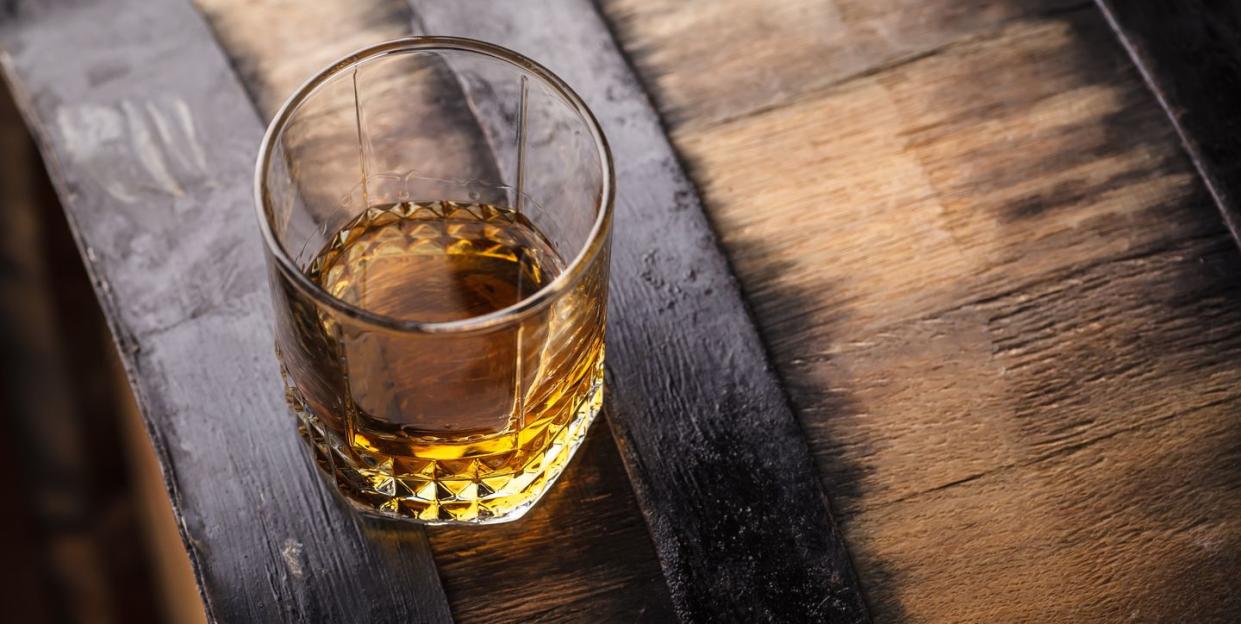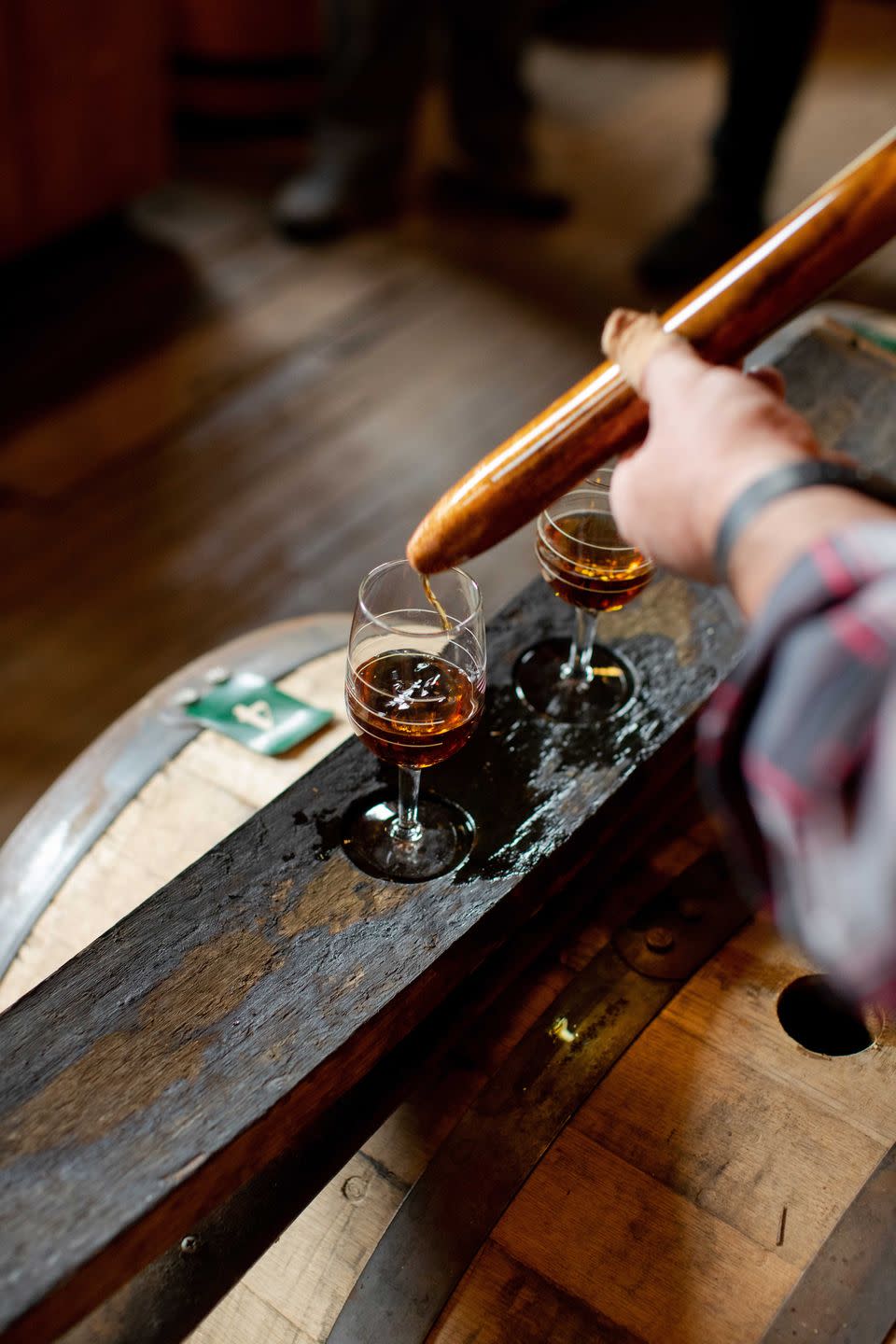Whiskey’s Age Isn’t Everything, and Older Doesn't Mean Better

The whiskey world is built on legacy. Scotch distilleries tout 200-plus-year histories, and stateside producers find roots in the colonial era. Individual batches can be categorized by age statements with the prevailing idea that older whiskies are better. But if you’re still shopping for whiskey based on age statements alone, you’re doing it wrong. Age is one thing, but it’s maturity that really matters.
Most whiskies are required to spend a minimum amount of time aging. For Scotch, Irish, and Canadian varieties, that’s three years, whereas the mandate for Japanese whiskies and ryes sits at two. The outlier is bourbon, which can be any age as long as it’s matured in charred, new oak barrels. Most distilleries choose to exceed these time frames by a few years or sometimes longer, depending on flavors they want to develop.
🥃 You love a great drink. So do we. Let’s nerd out over all things booze together.
This flavor maturation happens in wooden barrels, which are durable and easy to transport because of their curved shapes. One person can roll a 500-pound barrel relatively easily without the help of a motorized machine. “When you combine it with the natural watertight properties of white oak, it became a fantastic thing for storing whiskey,” says Lew Bryson, a whiskey journalist and expert who’s authored two books on the subject. White oak, also known as Quercus alba, is one of the most common woods used to make barrels, but other species within the genus—such as Q. robur (European oak), Q. garryana (Oregon oak), and even Q. mongolica (Mongolian oak)—are used, too. Each type lends different flavors, and charring the interiors of the finished barrels is essential to the eventual flavor infusion. This charcoal also filters out harsh notes.
Anywhere from 50 to 80 percent of flavor and all of a whiskey’s natural coloring comes from the barrel it’s aged in. “The thing that has the biggest weight on what your whiskey is going to taste and smell and drink like is the barrel it’s in,” Bryson says. But the natural infusion process takes time. Oak’s small pores are uniquely qualified for the task because they prevent liquid leaks but are permeable to gases. This allows oxygen into the barrel, which fuels chemical reactions. As the distillate oxygenates over time, alcohol breaks down lignin and lactones, components in oak that release vanillin and coconut notes, respectively. Let a whiskey age for too long though, and bitter and astringent oak tannins will overpower more delicate flavors.

New barrels have a higher concentration of flavoring solids than barrels that have already been used to age sherry or another whiskey. As a result, bourbon or the growing number of other whiskies aged in new barrels need less time to develop the rich, woody flavors that distillers are after.
Maturation is also dependent on the location of the aging warehouse and even a barrel’s location within that warehouse. Climates with greater temperature variations will produce complex whiskies faster than ones with more consistent weather.
As important as these variables are, it’s easier for companies to sum up this process in an age statement that, in the past, served as an assurance of quality. Now that distilleries are more reliant on scientific processes and as information about those processes has proliferated among consumers, these labels don’t carry the same weight. (And in the case of blended whiskies, they never told the full story. The age on a label refers to the youngest expression in the mix.) It’s become more common for distilleries to not print ages on some bottles.
Still, different types of whiskies can mature at disparate rates, and that can be useful as you browse your local liquor store. Although there are exceptions, rye can develop greater complexity faster than bourbon, and bourbon faster than Scotch, Irish whiskey, and Canadian whisky. A Japanese whisky aged in mizunara oak, or Q. crispula, also takes longer to tease out the desired coconut and sandalwood notes from the wood.
If a competitive price is most important, choose something younger. Older whiskies cost more because distilleries want to recoup the investment they made in the long production time. The higher price also accounts for the greater amount of whiskey that’s inadvertently evaporated out of the barrels in what’s known as the angel’s share. Depending on the climate, the volume within each barrel decreases by about 2 percent each year.
Try These Bottles
“I think the great thing that we’ve seen, especially across the market—bourbon, Scotch, Japanese [whisky]—is you can find a quality product to fit every price point,” says Bill Thomas, a whiskey collector and the owner of Jack Rose Dining Saloon. The Washington, D.C., bar and restaurant has an extensive whiskey collection with 2,000 or so bottles. “There is a way to get younger expressions to show with greater depth and complexity, and that’s by looking at the entire process,” Thomas says. He points to High Wire Distilling in Charleston, South Carolina, along with Willett and Wilderness Trail, both out of Kentucky, as distilleries that are selecting more seasoned (read: drier) barrels and filling them with a lower-proof distillate. The result: younger whiskies of a noticeably higher quality than others of the same age.
Of course, should you choose to invest in an older premium bottle, you’re likely to be rewarded with a smooth, layered whiskey that makes a damn fine nightcap. Just remember to seal your open bottle with a sheet of paraffin wax between pours to prevent any evaporation. There’s no sense in letting one drop go to waste.
Hacking the Whiskey Aging Process
In 2013, Cleveland Whiskey made headlines for making bourbon in six days. The first expression to reach consumers actually took about six months from start to finish—still, a veritable sprint compared to the traditional technique.

Cleveland Whiskey’s secret is a pressurized rapid “aging” method that CEO Tom Lix began developing in 2007. The production includes three months to three years in oak barrels plus the finishing process, which takes about a day. Inside stainless steel tanks, variations in pressure force the bourbon in and out of finishing woods to quickly extract flavors from black cherry, maple, or apple—woods that would not make good aging barrels.
Lix’s team isn’t alone. Los Angeles’s Lost Spirits relies on light and heat to speed natural chemical reactions. Other distilleries favor sonic aging, where loud bass-heavy music is supposed to speed up maturation.
Skeptics of these production methods abound, but Lix isn’t deterred. The way he sees it, the hype around older bourbon is fueled by marketing and the reality that there hadn’t been a faster way to make it until more recently. “The metrics are changing,” he says. “All that matters is taste.”
You Might Also Like
